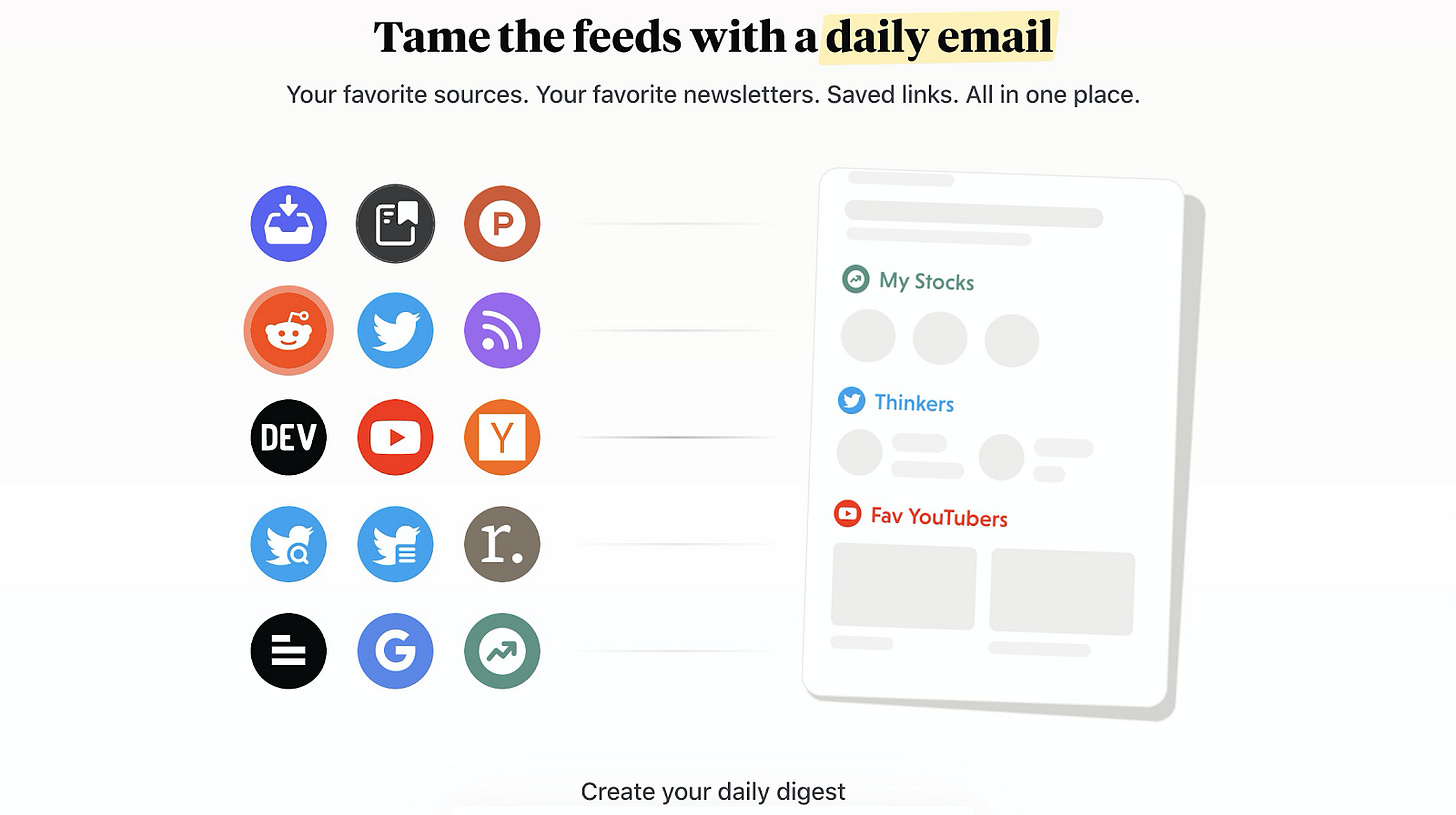Wonder Tools 💌 Get a digest of your favorite subscriptions
Mailbrew lets you package feeds you like into a single email 📧
Mailbrew streamlines dozens of accounts you follow into a customizable digest. It used to cost $8/month but a new owner has made it free. Read on for how to make the most of it; a demo vid & a recommended setup; caveats; and alternatives. For a quick example, here’s a new public Mailbrew digest I created.
The problem Mailbrew addresses
It’s hard to keep …



